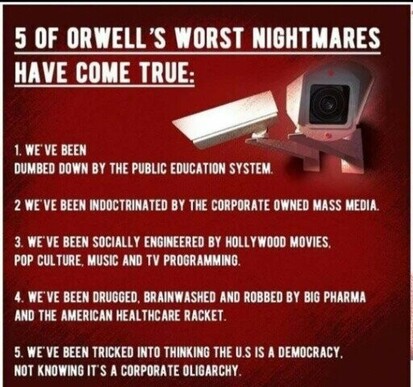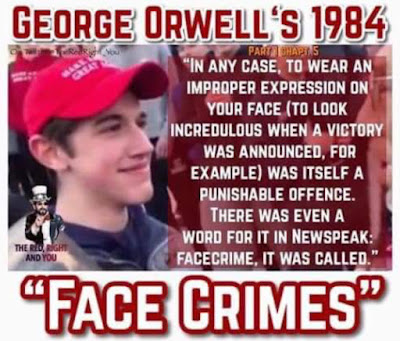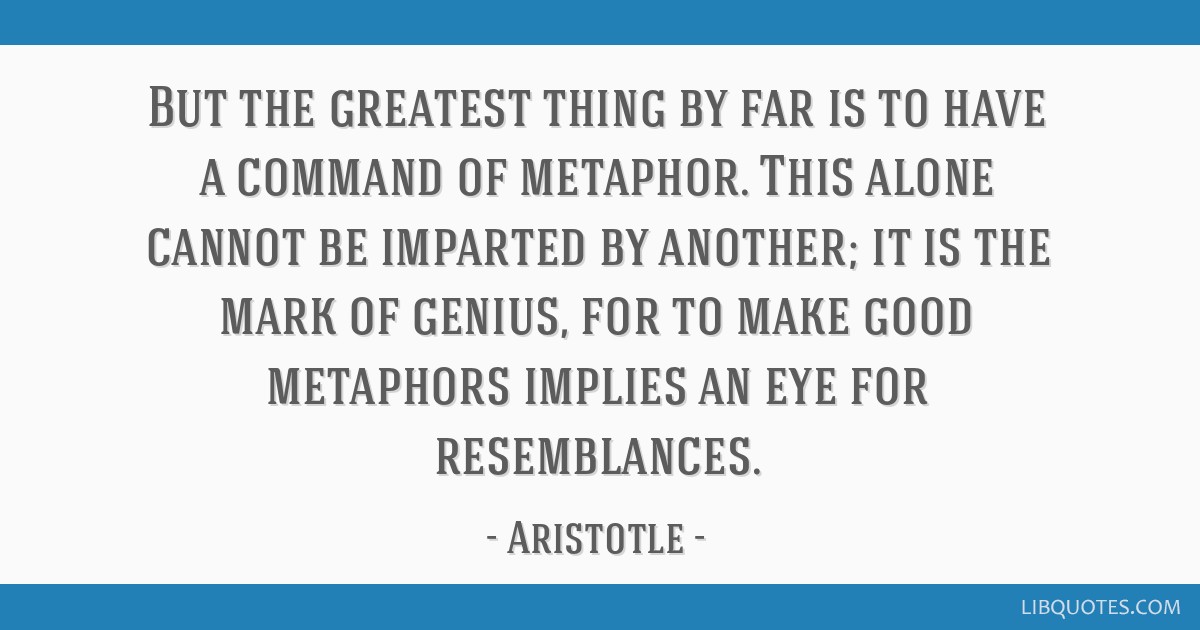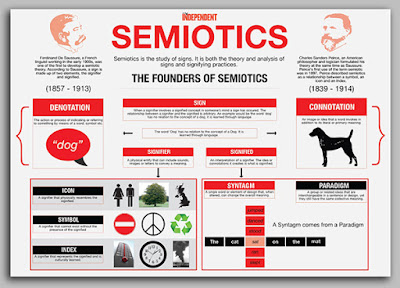1984 Newspeak DictionaryNewspeak and other terminology found in 1984
Airstrip One - Formally called England.
This term demonstrates Orwell's distain for American influence Europe. It seems that Oceania (America, England, South America, Australia) looks upon Britain as little more than an ‘airstrip’ ... a launching ground into the European theater of war. It appears that Orwell was predicting the minor role that England would play in the global politics of the future.
artsem - artificial insemination; the government is pushing this method of childbirth as the ONLY
method, to aid in the destruction of the family unit.Atomic Wars - The Atomic Wars took place during the 1950's. Colchester, England is the only city that was specifically mentioned as being nuked, but the book does say that many cities were destroyed in North America, Europe, and Russia. It was out of the chaos of these wars that Party emerged and seized
control.
Big Brother - Similar to America's "Uncle Sam", except this individual is the leader – possibly a fictional leader – of the nation. In Oceania, Big Brother is worshiped almost as if he were a god. He represents mthe omnipresence of the government.
bellyfeel - Full emotional understanding. Blind, enthusiastic acceptance of a concept.
blackwhite- The ability to accept whatever "truth" the party puts out, no matter how absurd it may be.
Orwell described it as "...loyal willingness to say black is white when party discipline demands this. It also means the ability to believe that black is white, and more, to know black is white, and forget that one has ever believed the contrary."
Chestnut Tree Cafe - The "haunt of painters and musicians. There was no law, not even an unwritten law, against frequenting the Chestnut Tree Cafe, yet the place was somehow ill-omened. The old, discredited leaders of the Party had been used to gather there before they were finally purged.
crimestop - Orwell's definition: "The faculty of stopping short, as though by instinct, at the threshold of any dangerous thought. It includes the power of not grasping analogies, of failing to perceive logical errors, of misunderstanding the simplest arguments if they are inimical to Ingsoc, and of being bored or repelled by any train of thought which is capable of leading in a heretical direction. In short....protective stupidity."
chocorat - Chocolate ration. The chocolate ration in 1983 was 30 grams per week. (For comparison, a
standard Hershey's Chocolate Bar is 43 grams) In the year 1984, the chocolate ration went up to 25
grams per week.crimethink - To even consider any thought not in line with the principles of Ingsoc. Doubting any of the
principles of Ingsoc. All crimes begin with a thought. So, if you control thought, you can control crime.
Disputed Territories - These are areas of the world NOT permanently included in any of the Superstates:
The quadrilateral between Tangier, Brazzaville, Darwin, and Hong Kong; Equatorial Africa; Middle East; Southern India; and the Indonesian Archipelago. These areas are always occupied by one of the three superstates, but are constantly changing hands.
doubleplus- - A prefix used to create the superlative form of an adjective or adverb. (i.e. - pluscold and doublepluscold meant, respectively, 'very cold' and 'superlatively cold'. If you want a stronger version of "good", what sense is there in having a whole string of vague useless words like "excellent" and "splendid" and all the rest of them? "Plusgood" covers the meaning, or "doubleplusgood" if you want something stronger still.
doublethink - reality control. The power to hold two completely contradictory beliefs in one's mind simultaneously, and accept both of them. Here is how Winston Smith described doublethink in the
novel:
To know and not to know, to be conscious of complete truthfulness while telling carefully constructed lies, to hold simultaneously two opinions which cancelled out, knowing them to be contradictory and believing in both of them, to use logic against logic, to repudiate morality while laying claim to it, to believe that democracy was impossible and that the Party was the guardian of democracy, to forget whatever it was necessary to forget, then to draw it back into memory again at the moment when it was needed, and then promptly to forget it again: andabove all, to apply the same process to the process itself. That was the ultimate subtlety:
consciously to induce unconsciousness, and then, once again, to become unconscious of the act of hypnosis you had just performed. Even to understand the word 'doublethink' involved the use
of doublethink.'
duckspeak - (to quack like a duck). To speak without thinking. Can be either good or bad, depending on who is speaking, and whether they are on your side.Eastasia - Smallest of the three superstates.(Political System: Death Worship/Obliteration of Self) Comprised of China and the countries to the south of it, Japan, and a large (but fluctuating) portion of Manchuria, Mongolia, and Tibet. Eastasia was Oceania's ally at the start of the book, and by the end Eastasia had always been Oceania's enemy.
Eurasia - One of the three superstates. (Political System: Neo-Bolshevism) Comprised of the whole northern part of the European and Asiatic land-mass, from Portugal to the Bering Strait. Eurasia was Oceania's enemy at the start of the book, and by the end Eurasia had always been Oceania's ally.
facecrime - Orwell's definition : "It was terribly dangerous to let your thoughts wander when you were in any public place or within range of a telescreen. The smallest thing could give you away. A nervous tic, an unconscious look of anxiety, a habit of muttering to yourself -- anything that carried with it the suggestion of abnormality, of having something to hide. In any case, to wear an improper expression on your face (to look incredulous when a victory was announced, for example) was itself a punishable
offence. There was even a word for it in Newspeak: facecrime, it was called."
Floating Fortress - huge sea bases; gigantic battleships. This term has its roots in the real-life term for bombers during WWII, flying fortress.
The Golden Country- A beautiful landscape that Winston sees in his dreams. It is a symbol of purity... A
land untouched by humans (and not altered by the government).
Orwell's Description: "The landscape that he was looking at recurred so often in his dreams that he was never fully certain whether or not he had seen it in the real world. In his waking thoughts he called it the Golden Country. It was an old, rabbit-bitten pasture, with a foot-track wandering across it and a molehill here and there. In the ragged hedge on the opposite side of the field the boughs of the elm trees were swaying very faintly in the breeze, their leaves just stirring in dense masses like women's hair. Somewhere near at hand, though out of sight, there was a
clear, slow-moving stream where dace were swimming in the pools under the willow trees."
Goldstein, Emmanuel - The supreme enemy of the state. He was once a high-ranking member of the party, until he supposedly betrayed the party and began engaging in revolutionary activities. He is the supposed head of the "resistance". Goldstein is to Ingsoc what Satan is to Christianity... The embodiment of pure evil.
Goldstein’s Book - One of the greatest acts of heresy that a citizen of Oceania can possibly commit is to read Goldstein's Book, The Theory and Practice of Oligarchical Collectivism. The government portrays the book as the centerpiece of the Resistance -- the ultimate tome of all that is evil -- which is the reason Winston coveted it so. But when you get right down to it, all this book does is explain the structure of society in straightforward and honest manner. And under a totalitarian regime, that is the single
greatest act of thoughtcrime possible.
goodthinker - One who strongly adheres to all of the principles of Newspeak. (goodthinked, goodthink, goodthinked, goodthinking, goodthinkful, goodthinking, goodthinkful, goodthinkwise, goodthinker )
hate week - Week in which Oceanian citizens all attend rallies and parades to inflame hatred of Party enemies and heighten their efforts on behalf of Oceania.
Ingsoc - English SocialismInner Party. Official party members. Upper class. About six million individuals (or 2%) of the populationin Oceania fall into this class. They possess most of the comforts of today's middle class (with the
addition of two or three servants and possibly a helicopter).joycamp - Forced-labor camp.
malreported - When the Times reports a fact which the government later deemed untrue. You see, the government is never “wrong”; the paper merely reports the facts incorrectly.
memory hole - A system of pipes, similar to pneumatic tubes, which were used to destroy documents. A document stuffed in the memory hole would be conveniently whisked away to the furnaces below -quickly & easily wiped from history.
Miniluv - Ministry of Love (law and order). "The Ministry of Love was the really frightening one. There were no windows in it at all. Winston had never been inside the Ministry of Love, nor within half a kilometer of it. It was a place impossible to enter except on official business, and then only by penetrating through a maze of barbed-wire entanglements, steel doors, and hidden machine-gun nests. Even the streets leading up to its outer barriers were roamed by gorilla-faced guards in black uniforms, armed with jointed truncheons... One did not know what happened inside the Ministry of Love, but it was possible to guess: tortures, drugs, delicate instruments that registered your nervous reactions, gradual wearing-down by sleeplessness and solitude and persistent questioning."
Minipax - Ministry of Peace (war)
Miniplenty - Ministry of Plenty (rationing). The Ministry of Plenty controlled the entire economy.
Minitrue - Ministry of Truth (propaganda) - Department of the government in charge of all record keeping, history re-writing, and prolefeed: "It was an enormous pyramidal structure of glittering white concrete, soaring up, terrace after terrace, 300 meters into the air. The Ministry of Truth contained, it was said, three thousand rooms above ground level, and corresponding ramifications below. Scattered about London there were just three other buildings of similar appearance and size. So completely did they dwarf the surrounding architecture that from the roof of Victory Mansions you could see all four of them simultaneously. They were the homes of the four Ministries between which the entire apparatus
of government was divided."
Newspeak - The official language of Oceania. Newspeak is "politically correct" speech taken to its maximum extent. Newspeak is based on standard English, but all words describing "unorthodox"
political ideas have been removed. In addition, there was an attempt to remove the overall number of words in general, to limit the range of ideas that could be expressed.
Oceania - One of the three superstates. (Political System: Ingsoc) Winston Smith's home. Comprised of North and South America, Britain, Australia, and southern portions of Africa. Newspeak is the official language of Oceania, but standard English is still spoken by many.
Oldspeak - Standard English. Newspeak is based on Oldspeak, with all words which represent unpopular (or politically incorrect) ideas removed.
oldthink - Holding on to old ideas and patterns of thought not consistent with current government
policy (Ingsoc). Maintaining a belief that is no longer acceptable, but was normal just a few years prior.Outer Party - Middle class. Bureaucrats, and other government employees. Comprising approximately
13% of population. There is a huge gap between the standard of living of Inner and Outer party
members. Outer Party members have very little possessions, and almost no access to basic consumer
goods. All outer party members have a telescreen in every room of their pathetic excuse for an
apartment.ownlife - Individualism and eccentricity. A desire to do something for your own benefit. (i.e. hobbies,
ownership of property, love, or any other thoughtcrime)Physical Jerks - morning exercises. Participation was mandatory for all outer party members. These
exercises took place every day 3 minutes after the morning wake-up call, which for office workers was at
7:15 am.prole - proletarians. Approximately 85% of Oceania's population is in this class. Members of the party
viewed them as animals. They are not as rigidly observed as members of the party, and very few (if any)
have telescreens in their home. They are permitted to indulge in acts considered thoughtcrime, simply
because it would be impossible to observe all of them as rigidly as the party observes its own members.
Plus, allowing them to indulge in these "little joys" helps to keep the masses content.prolefeed - trashy "entertainment" and spurious news which the Party handed out to the masses. This
includes written literature, movies, music, and other various propaganda created for the proles.Recdep - Records Department - Department of the Ministry of Truth in which Winston Smith worked.
Department responsible for correcting "mistakes" in past newspaper articles.Reclamation Centre - Colony for children made homeless during the Atomic Wars.resistance - The resistance was the revolutionary group which was supposedly led by the arch-traitor,
Emmanuel Goldstein. There is some question as to whether or not this group actually existed. The novel
seems to imply that the resistance was simply fabricated by the government, or at the very least, that
the police had agents posing as real resistance members in order to catch possible recruits.Room 101 - The final punishment for thoughtcriminals in the Ministry of Love.
"The thing is in Room 101 is the worst thing in the world....The worst thing in the world varies
from individual to individual. It may be burial alive, or death by fire, or by drowning, or by
impalement, or fifty other deaths..... "speakwrite - Voice recognition machines. (A fairly 'futuristic' concept, considering that this book was
written in 1948)Telescreen - Two way television. All party members have one in every room of their apartment. Because
of this, the party member is never out of earshot of the latest party propaganda, and not one second
goes by that they are not under the surveillance of the party. There was no way to change the channel,
and the telescreen could not be turned off except by members of the Inner Party.Thinkpol - ThoughtPolice. Police force in charge of eliminating crimethink. The thought police monitor
the public by way of spies (narcs), helicopters, and telescreens.
two minute hate - Daily telescreen specials in which various elements of crimethink were packaged into
a parade of horrible images and sounds, at which, the viewers were expected to boo, hiss, curse. and
release any negative emotions upon.unperson - Person that has been erased from existence by the government for breaking the law in some
way. A unperson is completely erased from history. All records of their existence is removed from
record, and all party members are expected to removed them from memory. To mention their name is
considered thoughtcrime. This eliminates any possibility of martyrdom.
vaporized - The act of being executed by the state, and having all records of your existence erased.Becoming an unperson.versificator - A writing machine. A mechanical device that produced "literature" and "music" for the masses. This was necessary so that a party member would not be forced to cloud their mind with such frivolous concepts. It produced trashy newspapers containing almost nothing except sports, crime and
astrology, sensational five-cent novelettes, and sentimental songs.
Youth League - Mandatory children's group under control of the Thought Police. Similar to the "Hitler Youth.” Their member's primary task is to monitor the activities of their parents.












































